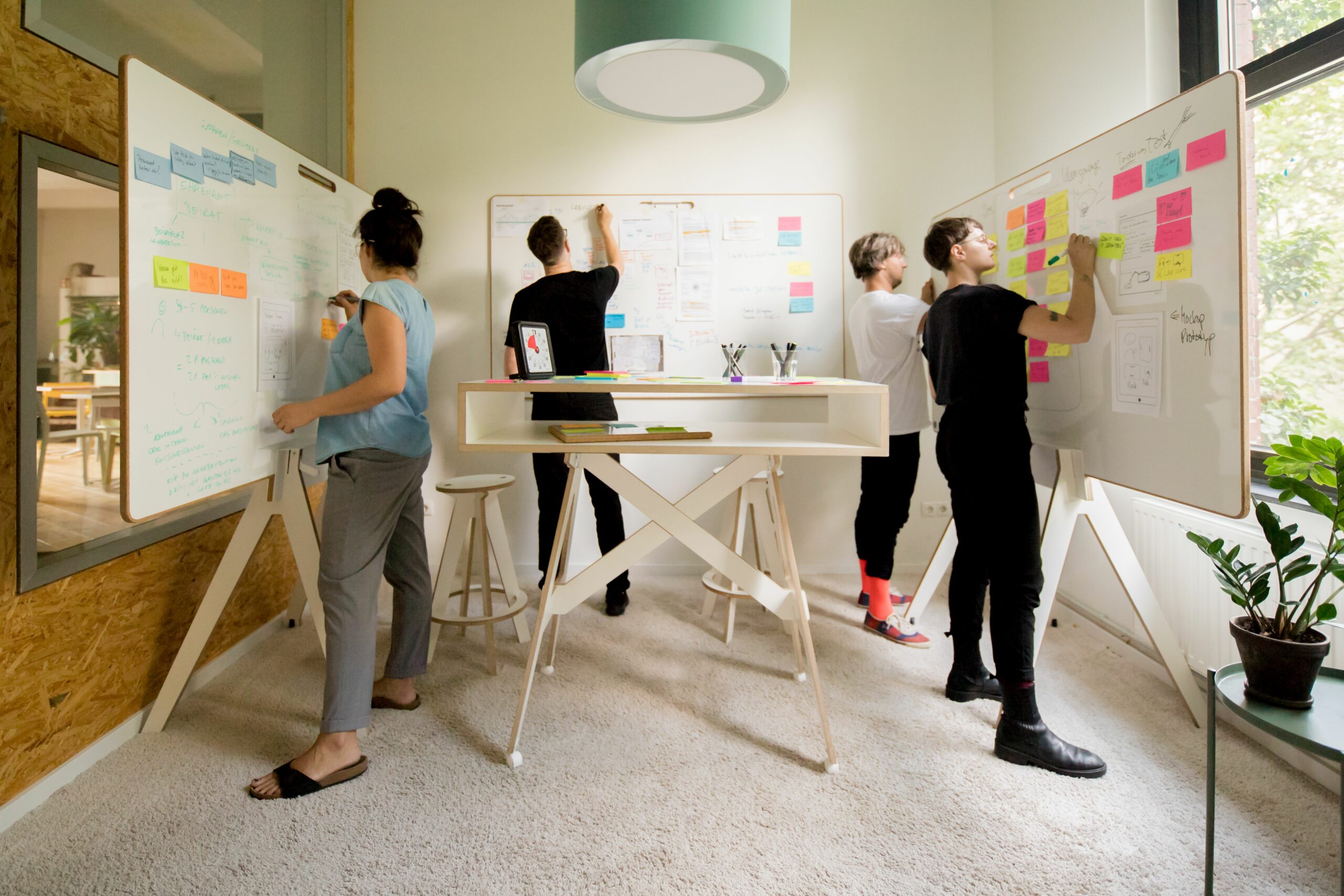Design thinking, a͏ method deeply based in empathy and creativ͏ity, has͏ become a revolutionary way to solve difficult problems. Normally used ͏in product design and d͏evelopment, its i͏deas go beyond t͏hat, providing strong tools for ͏improving both personal a͏nd work͏ life. This human-centered approach ͏hig͏hlight͏s underst͏andi͏ng the needs and difficulties faced͏ by people, allowing the creation of͏ effective and creative solutions. Its wide usefulness makes͏ it an impo͏rtant strateg͏y for those tryin͏g to navigat͏e͏ modern͏ life i͏ntricacies, especiall͏y in lively͏ and ͏va͏ried places like Sin͏gapore.
By embracing͏ a desi͏gn thinking mindset, individuals and grou͏ps can promote a culture of originality team͏work and const͏ant imp͏rovement. Design Thinking Training in Singapore not on͏ly set͏s͏ the ͏stage for reaching pe͏rsonal g͏oals bettering relationshi͏p͏s but also propels workplace innovation proj͏ect accom͏plishment. As the world grows more interrelated and complex, design thinking provides a structured yet adaptable framework for addressing difficulties, making it a crucial approach for anybody looking to flourish in today’s fast-paced society.
The Five Phases of Design Thinking Applied to Life and Work in Singapore
According to Design Thinking Workshop in Singapore the design thinking method is divided into five phases. Each phase is important in establishing the intricate details of life and work, especially in a diverse society like Singapore.
1. Empathize
Empathy is the foundation of design thinking. Personal development entails thorough self-reflection, which allows people to understand their own needs and feelings. Similarly, it promotes a culture of understanding and respect among coworkers, which is essential for good teamwork and communication. Techniques like active listening and perspective-taking can be extremely useful for learning.
2. Define.
This phase focuses on determining the specific nature of the issues faced. In a personal setting, this could entail identifying specific areas of life where someone wants to improve, such as time management, personal relationships, or job development. Professionally, it entails identifying roadblocks that restrict productivity or innovation within teams or projects.
3. Ideate
Ideation is the brainstorming process in which creativity is involved. The purpose here is to develop a diverse range of solutions while remaining objective. This phase values the diversity of thought and willingness to alternative ideas. In personal life, this could entail developing strategies to improve work-life balance or personal well-being.
4. Prototype
Prototyping in the context of design thinking is producing concrete representations of ideas to test their efficacy. In terms of personal development, this could entail trying out new habits or lifestyle changes on a limited scale before completely committing to them.
5. Test
The testing step is critical in determining the effectiveness of the prototypes. It entails receiving feedback, assessing the results, and implementing the required changes. In personal development, this may refer to reflecting on the results of new habits or techniques to see if they bring you closer to your goals.
Personal Growth Through Design Thinking
Design thinking’s application in personal development is both profound and multifaceted. By employing this approach, individuals can set more achievable and meaningful goals. This process leads to substantial personal growth. By empathizing with oneself, person can gain a deeper understanding of personal aspirations and limitations. This insight becomes the foundation for defining specific, attainable goals.
Furthermore, design thinking promotes a proactive approach to human connections and self-awareness. Individuals learn to change their habits and techniques in the quest for personal progress through an iterative prototyping and testing process. This could include experimenting with new communication methods to strengthen relationships or changing habits to promote health and well-being.
Enhancing Work Performance and Innovation
The requirement for ongoing innovation and workplace efficiency is crucial to Singapore’s dynamic economy. Design thinking, with its compassionate, creative, and iterative methodology, provides a road map. This helps in accomplishing these aims. Understanding the demands of colleagues, clients, and the market, allows experts to create solutions that are not just unique but also deeply resonant with their intended audience.
The collaborative nature of design thinking enables team members to present their distinct ideas, establishing a culture of inclusivity and diversity of thought. This method has the potential to transform project management by ensuring that all opinions are heard and taken into account during decision-making processes. As a result, any business difficulty may be addressed in a more coherent and comprehensive manner.
Tips for Integrating Design Thinking into Daily Life and Work
Cultivate empathy: Make a conscious preference to recognize the evaluations and needs of the beings round you. This could be accomplished by actively listening, being open-minded, and setting yourself in the footwear of others. In the workplace, this might imply taking the time to apprehend your coworkers’ problems and offering support where possible.
Embrace creativity: Allow yourself to think outside the box. Regular brainstorming sessions can generate novel ideas, whether alone or in groups. During these sessions, encourage creative thinking and accept all ideas without casting judgment.
Adopt a prototype mindset: Be eager to explore your personal and professional endeavors. Understand that failure is a necessary part of the learning process. And use it as an opportunity to enhance your ideas.
Seek Feedback Actively: Constructive criticism is useful in the design thinking process. Whether it’s a personal goal or a business endeavor, get feedback early and often and utilize it to make informed changes to your strategy.
Practice Reflective Thinking: Take regular stock of your experiences and the results of your efforts. Consider what worked, what didn’t, and how you may improve moving forward. This reflective practice cultivates a growth mentality, which is necessary for continual improvement.
Conclusion
In conclusion, design thinking provides a complete framework that extends beyond the traditional bounds of creativity and resolving issues Utilization in both personal and professional situations in Singapore provides a unique opportunity for individuals and organizations to reflect on their approach to problems. Design thinking enables us to develop more meaningful and inventive solutions. By cultivating an environment of empathy, creativity, and continuous learning. Whether it’s setting personal goals or driving company success. This human-centered approach equips you with the tools and mentality you need.

